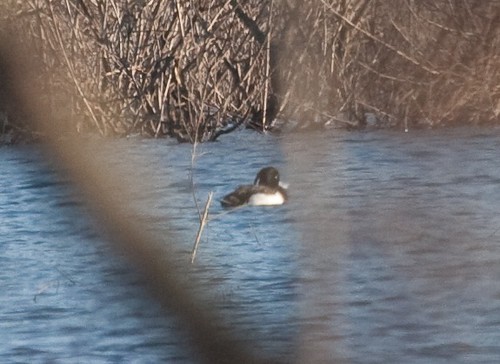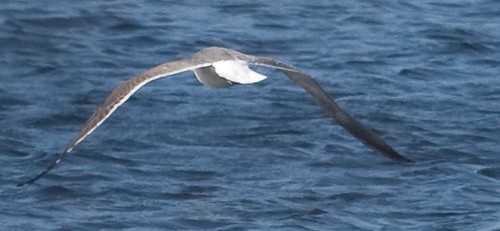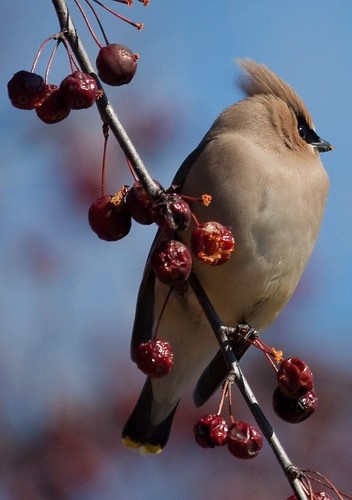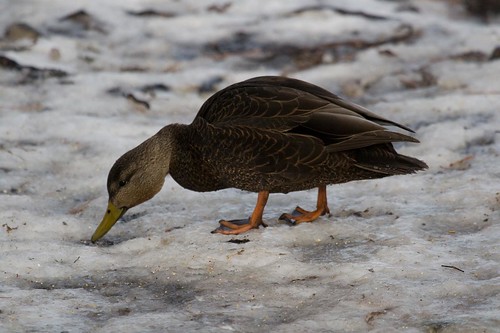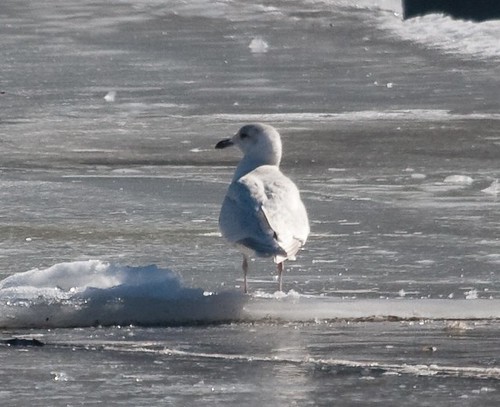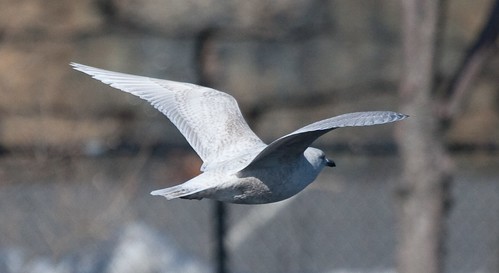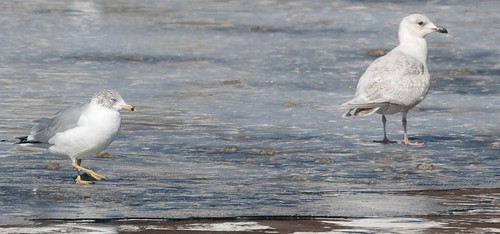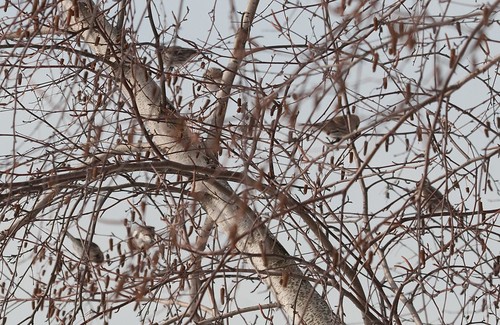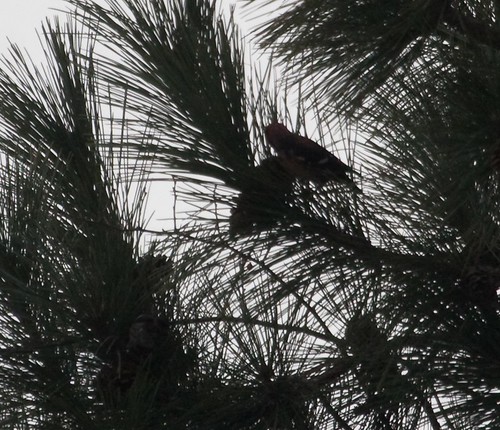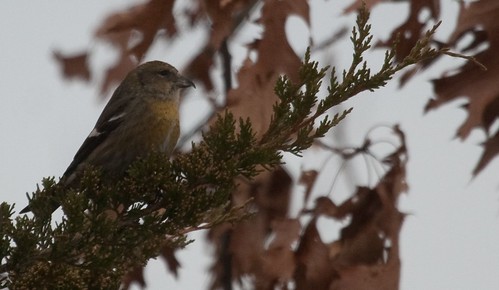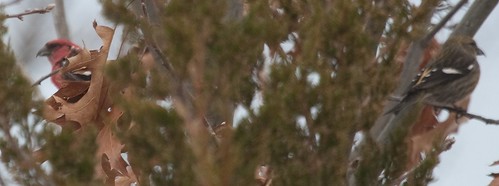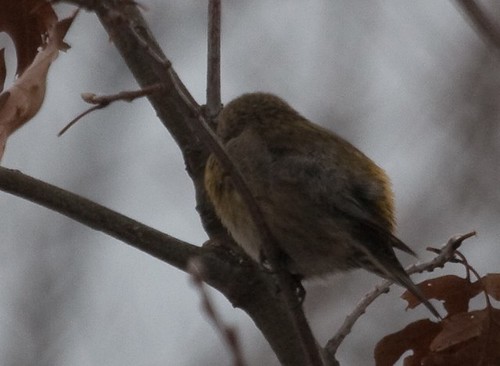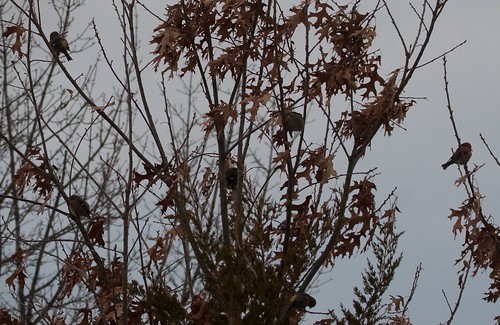Can’t wait for these (and the rest of the swallows) to return.
Links etc
A few interesting links from the last few days while I think about getting the 100 places series going again:
Mass BBA Blog is being updated again
New Moth Project: North American Moths Backyard Inventory, complete with carnival (not that I’ll have found something worth writing about in time for the first one or two)
Fascinating thread on TEXBIRDS about storing data (what do you do with your actual notes/drawings and nonbird records that can’t go up on ebird?)
Tufted!
I took a quick break at work this afternoon to check email and found yet another email from John Hines. And not just a bird of local interest, but a major state rarity with a Tufted Duck at River Rd. in Wayland! That made for a long hour and a half to finish the day, but as soon as I could, I ran home to grab the scope and camera and headed off.
Arriving at about 5:15, there were a few Ring-necks in the water right by the side of the road. On the second scan, the gleaming white sides of the Tufted were obvious. I grabbed for the camera and watched the flock take off. A few minutes of scanning and they fortunately came back into view, although nowhere near as close. Since the road is heavily bordered by trees, it was rather difficult to get a clear shot and I ended up having to use manual focus, but I did get a few shots for documentation:
Even in the small size, look how obvious the white flanks are.
Winter List 2008-2009
Once again, taking an idea from the Canadians, here’s a December-February list for Waltham. Dates and locations are the first sighting. Birds in bold are my first Dec-Feb sighting in Waltham.
(Dating way back to free up the article version for 2009-2010)
The List:
- Canada Goose (12/2, Lyman Pond)
- Mute Swan (12/10, Hardy Pond)
- American Black Duck (12/14, Hardy Pond)
- Mallard (12/2, Lyman Pond)
- Ring-necked Duck (12/10, Hardy Pond)
- Bufflehead (2/15, Charles)
- Common Goldeneye (12/28, Charles)
- Barrow’s Goldeneye (12/28, Charles)
- Hooded Merganer (12/2, Lyman Pond)
- Common Merganser (1/2, Charles)
- Ruddy Duck (12/10, Hardy Pond)
- Great Blue Heron (12/2, Lyman Pond)
- Sharp-shinned Hawk (12/13, Lot 1)
- Cooper’s Hawk (12/20, yard)
- Red-tailed Hawk (12/6, Charles)
- American Coot (1/26, Charles)
- Ring-billed Gull (12/1, Lexington St)
- Herring Gull (12/3, Shaw’s)
- Iceland Gull (2/16, Charles)
- Lesser Black-backed Gull (2/25, Charles)
- Great Black-backed Gull (12/10, Hardy Pond)
- Rock Pigeon (12/6, Main St)
- Mourning Dove (12/3, yard)
- Eastern Screech-Owl (12/14)
- Great Horned Owl (1/2, Met State)
- Red-bellied Woodpecker (12/12, Prospect Hill)
- Downy Woodpecker (12/1, yard)
- Hairy Woodpecker (12/4, Prospect Hill)
- Northern Flicker (12/1, Paine)
- Blue Jay (12/12, Prospect Hill)
- American Crow (12/2, yard)
- Black-capped Chickadee (12/1, yard)
- Tufted Titmouse (12/1, yard)
- White-breasted Nuthatch (12/1, yard)
- Brown Creeper (12/4, Prospect Hill)
- Carolina Wren (12/7, yard)
- Golden-crowned Kinglet (12/1, Paine)
- Hermit Thrush (12/12, Prospect Hill)
- American Robin (12/3, yard)
- Northern Mockingbird (12/1, yard)
- European Starling (12/2, Trapelo)
- Cedar Waxwing (2/16, Charles)
- American Tree Sparrow (12/14, Met State)
- Song Sparrow (12/4, Prospect Hill)
- White-throated Sparrow (12/1, yard)
- Dark-eyed Junco (12/1, Paine)
- Northern Cardinal (12/3, yard)
- Red-winged Blackbird (12/14, Met State)
- Common Grackle (2/22, yard)
- House Finch (12/1, yard)
- White-winged Crossbill (2/8, Met State)
- Pine Siskin (12/4, Prospect Hill)
- American Goldfinch (12/2, Lyman Pond)
- House Sparrow (12/1, yard)
Cumulative total: 82, Mass total: later (didn’t track so it will take some time to figure…)
So a bit below the last couple years (where did the Fish Crows go?). But 4 new birds is more than last year.
Charles Lesser Black-back
Excerpt from an email I sent last Sunday about the Iceland Gull:
Now to find a Glaucous and a Lesser Black-back…
One of the first birds I looked at Wednesday along the same stretch of river:

Things really shouldn’t work out that easily.
The photo is from this morning when it wasn’t quite as cooperative. Here’s a couple flight shots:
And a Cedar Waxwing just because they were there:
BPW
Iceland
While leading a Menotomy walk along the Charles yesterday, someone walking by stopped to tell us about a hawk he saw take a gull in midair by the Moody St. Bridge recently. I can’t see that being anything other than a Peregrine, so after seeing nothing much elsewhere today, I headed over to that stretch of the river to see if I could find it.
Starting at the Prospect St. end, I quickly picked up a flock of Ring-necked Ducks, which is probably the group that hasn’t been around the other stretch lately. A bit further down a flock of Cedar Waxwings took off. I continued along, scanning through the gulls and ducks hoping for something a bit different when I came across this:
A gull with pale wing tips! The light was pretty bad here and I was having a hard time judging the size of the bird. Fortunately it was almost at Moody St. so I quickly crossed the bridge and got a better angle. The gull apparently took off while I did so as I couldn’t find it immediately. But a few seconds later, it came flying in.
It landed and sat for a few minutes giving some nice views. A family started throwing bread from the other side and it eventually flew over to join the frenzy. It appeared to have grabbed something quickly and moved back to the same spot where it sat until I moved on.
My second for Waltham and just a slightly better sighting than the first.
Finches!
This was a weekend of winter finches.
Saturday, I joined the Menotomy trip to Horn Pond. It was billed as a winter finch trip, but Marj implied that it was mostly wishful thinking. However, a short distance down the trail, I noticed a few lumps in a birch and stopped to look (not sure why no one else did after being told to check every birch carefully). I was quite surprised to see the black spot on the head of a Common Redpoll. They’ve definitely been uncommon this winter and I was assuming I’d have to wait until late in the year to get them on my yearlist.
We moved in to get a better look and more and more seemed to be moving in. I counted at least 16. It was still pretty cold out so I wasn’t really into trying to keep the camera steady but I did get at least one acceptable shot.
And here’s a group shot. How many can you count?
We continued on and had a few other good birds including my first Swamp Sparrows, Winter Wren, and Sharp-shinned Hawk of the year. Reaching the pines, we spread out to check for owls and instead had a flock of White-winged Crossbills fly over. We raced out into the open but they appeared to be long gone. Marj decided to end the trip here, so I continued to work in the direction the crossbills had been heading. Unfortunately I didn’t see or hear them again.
On Sunday, I decided to head to Met State and look for more finches. I still haven’t seen a Pine Siskin yet this year and would have liked a redpoll for Waltham. At the first stand of birches I found a bunch of little birds but they all turned out to be goldfinches. I headed up the hill to the water tower and then started down the road. Near the gate to the Gaebler building, I heard an odd finchy call and hurried down one of the side paths to track it down. It took a few minutes to find and I ended up having to slog through snow that was approaching my knees, but I did find them.
A bunch of White-winged Crossbills!
The light was pretty bad and they were a good ways off but I was happy. I was even happier when they started flying in to the trees that were just on the other side of the fence. They sat around preening and my count jumped from 3 to 5 to 7 and finally to 9. The variation was quite interesting with some birds having much stronger wingbars and streaking than others. I snapped a pile of pictures, some of the better ones are below.
This last one barely had any hint of a wingbar.
And here’s a group shot of most of the flock:
Eventually, they flew back to the pine to begin feeding again. I started to move on and a huge flock of goldfinches flew over. I chased after them hoping for something better mixed in. They didn’t cooperate, landing in trees about halfway down the hill. I tried a few different angles and wasn’t able to find anything but goldfinches.
The birding slowed considerably after that as the wind picked up and eventually got to the point of being uncomfortable. By the end of the walk, I was barely able to find any birds. I decided to stop and Dunback on the way home but the wind had all but eliminated things there. I walked around for 25 minutes and saw a single robin and heard a junco.
Even with the slow finish, it was a great weekend.
And for other people’s cool photos:
Texas 2009
I spent a week in January 2009 (from the 10th to the 16th) in South Texas. This trip was by myself and covered from Zapata to Brownsville looking for birds with some butterflies and dragonflies thrown in. I had originally planned on heading as far east as Laguna Atascosa and South Padre Island but ended up not going quite that far. As it was my first time down there, I didn’t spend a lot of time looking for individual birds but just wanted to experience a bit of everything. Consequently, I missed most of the harder to find species and the vagrants that were present (Blue Bunting and Crimson-collared Grosbeak among them).
I ended up with somewhere around 115 species of birds, 40 butterflies, and 12 dragonflies, including plenty of new everything.
This report will include daily summaries as well as a wrap-up and a species list.
- Travel Day (Boston to San Antonio to Zapata)
- Day 1 (Zapata, Falcon State Park, Salineno)
- Day 2 (Santa Ana and butterfly walk at Bentsen)
- Day 3 (Resaca de la Palma and Sabal Palm)
- Day 4 (Estero Llano Grande and LRGV NWR)
- Day 5 (Bentsen and drive to San Antonio and then flight home the next day)
Travel and equipment notes and complete lists
Also see the two posts I managed to make during the trip: after day 1 and heading home (not that those won’t be repeated in the daily reports).
Texas Logistics and Lists
Here’s a few notes about the trip (travel, car, hotel, food) and then complete lists of what I saw.
Travel
I flew on AirTran from Boston to San Antonio. Although San Antonio was a bit of a drive, round-trip was about $250 and Mission and other nearby airports were all well over $500. I also got a chance to see my friend Jack in San Antonio (although I didn’t actually have time to see the city). AirTran was quite good. I picked it out of several airlines that were all about the same price because it had the best connections. Although I would have liked one more day, by leaving on Friday I had a noon flight where all the weekend flights were at 7AM. I also had a better layover in Atlanta (several hours) compared to barely an hour in either Detroit or Memphis.
Car
I rented the car from Hertz. Although I reserved a Ford Focus, I ended up with a Mazda 6. I have no idea if there was a difference in the cost (the Mazda was more, but the GPS was discounted and this and that) but it was a very nice car. The gas tank was huge and with good mileage I made it almost to Brownsville before I had to fill it (and then only had to fill it again on the way back and a third of a tank to return it full). It had a huge blind spot that took a bit to get used to and I never figured out how to move the wheel so it wasn’t blocking the speedometer. Otherwise no complaints (other than I hit the alarm button every other time I tried to lock the wheel while holding the keys). The cruise control was really nice on the highway (I wish it worked at 5mph so I could scan on side roads without ended up picking up speed).
The GPS worked fairly well. I noted a couple places in the trip report where it had issues, but other than not being able to find the hotel the second night none were major. It was definitely a good thing to have.
Hotels
The first night in Zapata was at a Holiday Inn Express. I had issues getting the internet to work and didn’t catch on to the pull ring for the shower but otherwise no complaints. As I mentioned in the report, the room had a view of the water which was really nice. In Mission, I stayed at the Hawthorne Suites, which was fairly nice although it was slightly out of the way and I didn’t really need a full suite. In Brownsville I stayed at a La Quinta, which was quite nice. The Best Western that I picked at random in San Benito was not as nice as the others but nothing was really wrong (wireless would have been nice). And back in Mission, I picked another La Quinta which was also very good. Other than the first night (and that may have as I had nothing that needed to go in and can’t remember now), all the rooms had refrigerators.
Food
I didn’t go out of my way for any local food. On the way to Zapata, I pulled off at a truck stop and grabbed a sub. I didn’t really bother with lunch the next day and went to Chili’s for dinner. I stopped at a grocery store for snacks, which included enough for lunch the next day. In Brownsville, I got takeout from Rudy’s, which was fairly good and had enough to save for lunch. In San Benito, I tried Whattaburger, which was adequate for fast food. I had lunch at a Wendy’s in Weslaco and then dinner at Tony Roma’s in McAllen. I was able to have leftovers for lunch and then went to a Mary Callender’s in San Antonio.
Computer
I bought an Asus EeePc for the trip. It worked out beautifully. Small enough to pack it in my backpack with everything (scope, camera, binocs, etc) but it’s a regular pc. I was able to check email every night and download photos. The keyboard takes a bit to get used to (pretty much every time you pick it up) but otherwise there’s nothing I can really complain about. For $320, it’s well worth it and will be very good on future trips.
Species lists below.
Continue reading Texas Logistics and Lists


